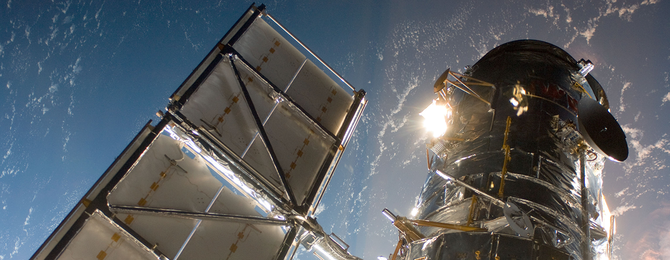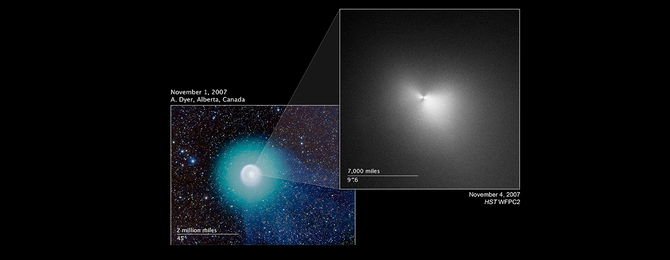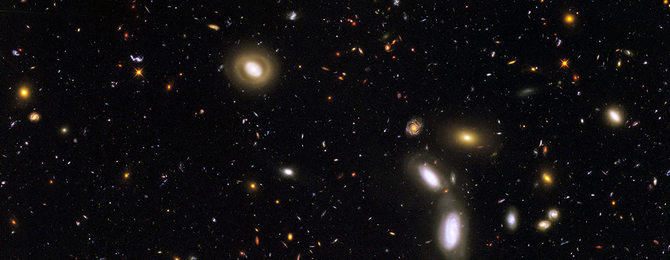Robby
Helper Bot
NASA's Hubble Spots Rare Gravitational Arc from Distant, Hefty Galaxy Cluster

Seeing is believing, except when you don't believe what you see. Astronomers using NASA's Hubble Space Telescope have found a puzzling arc of light behind an extremely massive cluster of galaxies residing 10 billion light-years away. The galactic grouping, discovered by NASA's Spitzer Space Telescope, was observed when the universe was roughly a quarter of its current age of 13.7 billion years.
The giant arc is the stretched shape of a more distant galaxy whose light is distorted by the monster cluster's powerful gravity, an effect called gravitational lensing. The trouble is, the arc shouldn't exist.
(More at HubbleSite.com)

Seeing is believing, except when you don't believe what you see. Astronomers using NASA's Hubble Space Telescope have found a puzzling arc of light behind an extremely massive cluster of galaxies residing 10 billion light-years away. The galactic grouping, discovered by NASA's Spitzer Space Telescope, was observed when the universe was roughly a quarter of its current age of 13.7 billion years.
The giant arc is the stretched shape of a more distant galaxy whose light is distorted by the monster cluster's powerful gravity, an effect called gravitational lensing. The trouble is, the arc shouldn't exist.
(More at HubbleSite.com)


















